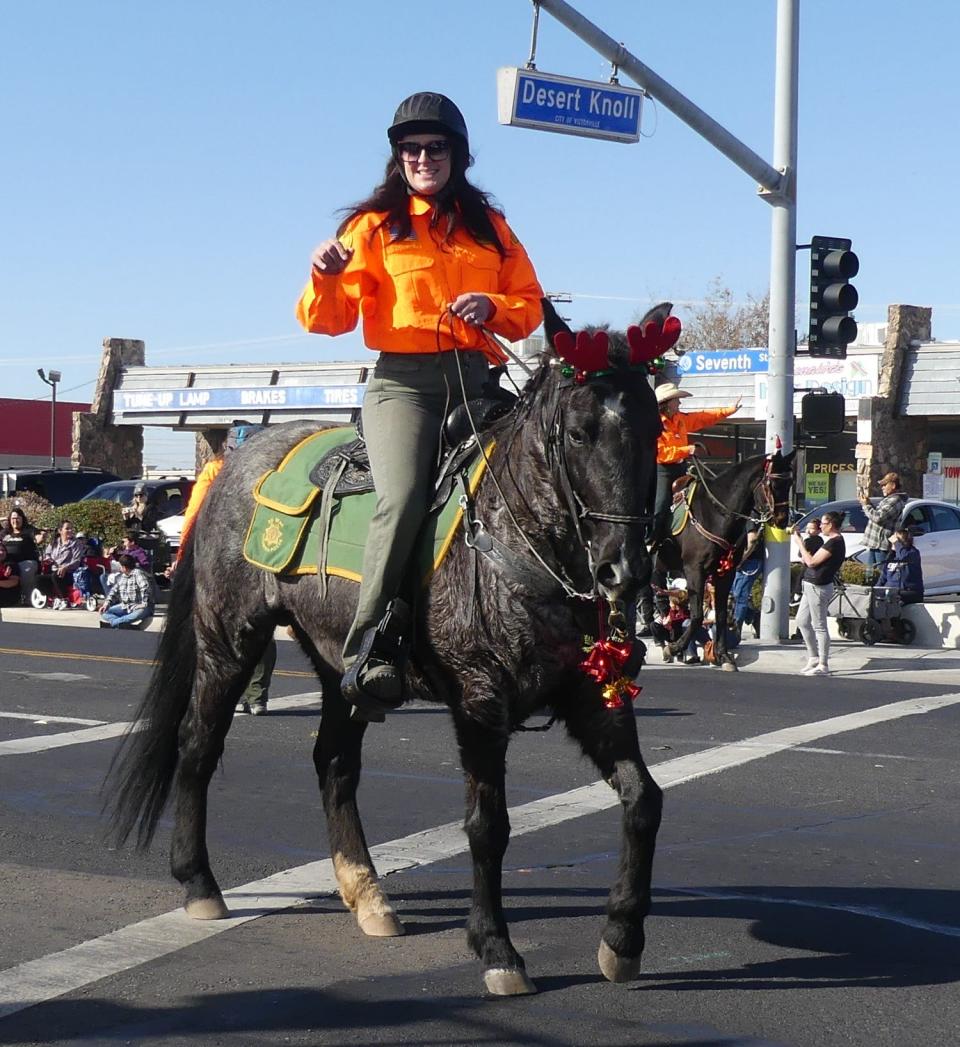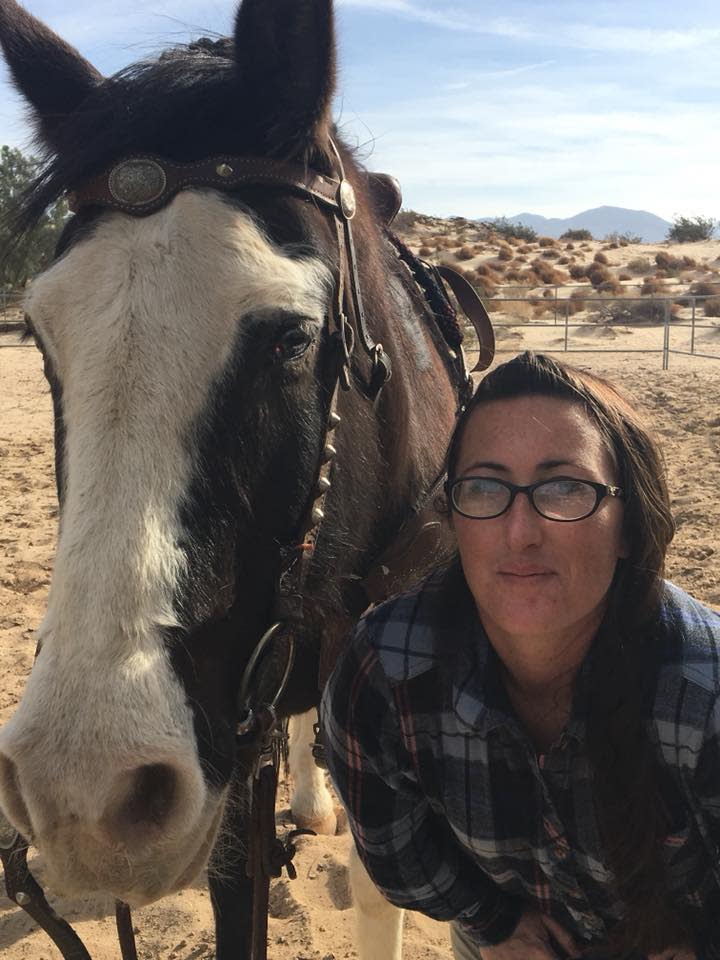Sheriff’s officials, horse owners warn of spread of equine virus in the High Desert
Horse owners and Victor Valley Sheriff’s Station officials are warning the public of the spread of the vesicular stomatitis virus in the High Desert and San Bernardino County.
Vesicular stomatitis is a viral disease of horses, donkeys, mules, pigs, sheep, goats, cattle, and new world camelids such as llamas, alpacas, some camels, and other animals, according to the USDA.
Because of the virus, sheriff’s officials said the equine-themed REMAX Poker Ride on June 11 will be rescheduled to a later date. The event benefits the Apple Valley Sheriff’s Posse.
Britney Swenson, owner/trainer of Pegasus Training in Yermo, said the virus is spreading fast in places like Phelan and Apple Valley.

“Thank God it hasn't affected my animals, but competitions in the area are shutting down this month," she said.
Mary Teran, a member of the Equestrian Council of Hesperia, urges the public to “keep your horses at home for the next couple of months, as this is a very contagious disease, spread by flies.”
Teran added that she’s glad to see that competitions have been canceled, “for the good of us all.”
Mary Teran and her late husband, Robert “Bob” Teran, were instrumental in the formation of the equestrian council, formed in 1989.
Adelanto resident Michele Specchio said the virus has not affected the 25 horses on her ranch. She also claims the virus is coming into the area via blister beetles.
The blister beetle is highly toxic to sheep and cattle, but primarily to horses. The beetles swarm in alfalfa fields and are drawn into bales by accident. Even small parts of these beetles are toxic to a horse, according to the American Association of Equine Practitioners.
“I'm on the road a lot for work and I see a lot of hay coming into this state,” Specchio said. “I think the AG stations shouldn't be letting hay in, or they need to be doing a better job of inspection.”
Specchio shared that her animal pens are cleaned daily and are watered every few days. A semi-truck also delivers the ranch’s hay, which is grown in the Antelope Valley.
“We have used them for 30 years and have zero problems,” Specchio said. “I understand hay is cheaper out of state, but it needs to be inspected better at state lines."

The spread
On Wednesday, the Equine Network reported 18 new cases of the virus across San Bernardino, Riverside, Orange, and San Diego counties.
Since the start of the outbreak in May, 62 virus-affected premises have been identified in California. On June 2, there were 44 properties quarantined, including 28 in San Diego County, according to the USDA.
The disease is spread by biting insects, primarily flies. It can also spread through shared feeding or water troughs, and commonly touched surfaces, the Equine Network said
Humans can also contract the virus by touching infected animals, so people are advised to wear gloves if handling the mouth, nose, or hooves of livestock.
In livestock, the disease causes severe blister-like lesions that are painful and often cause animals to stop eating and lose weight, forming crusty scabs, but it is rarely fatal. It can also cause temporary lameness.
No vaccine exists, but the virus can be treated with anti-inflammatory drugs. Secondary infections may require antibiotics.
In humans, the disease causes flu-like symptoms such as fever, muscle aches, headache, and malaise.
The USDA advises people to disinfect their hands and boots after handling an animal suspected of having the disease, and also change and wash clothes.
Start of the outbreak
In a webinar on May 31, USDA equine epidemiologist Dr. Angela Pelzel McCluskey said the viral disease is believed to have spread north from Mexico into areas of California that have received the heaviest rainfall in decades.
“This is likely supporting vectors,” she said.
The Southwestern and Western U.S. have experienced many vesicular stomatitis outbreaks, the most recent and largest outbreak occurred in 2015, USDA officials said.
Outbreaks usually occur during the warmer months, often along waterways. The time from exposure to the onset of clinical signs is 2-8 days, the USDA reported.
About Vesicular Stomatitis
The Equine Network say clinical signs of vesicular stomatitis in animals include:
Vesicle formation leading to ulcerative lesions on the lips, muzzle, nostrils, and tongue. The tongue is often the most severely affected area.
Ulceration of the inner surface of the lips.
Crusting of the muzzle, nostrils, and/or inside the ears.
Excessive salivation secondary to the oral lesions.
Difficulty picking up and chewing feed.
Lameness due to painful erosions on the coronary band.
Lesions can occur on the udder, sheath, and inside of the ear.
Lesions can develop secondary infections resulting in slow-to-heal wounds.
Animals on pastures are at increased risk of vesicular stomatitis.
Treating animals
Best practices to treat the virus include implementing good biosecurity and treating affected horses with pain relievers, anti-inflammatories, and supportive care as recommended by a veterinarian, according to Equine Network.
Isolating all affected animals and placing the premise on immediate quarantine is required until all horses have fully recovered and no active lesions are present.
The State Veterinarian with the California Department of Food and Agriculture will work with local veterinarians to determine and implement necessary quarantine procedures.
Daily Press reporter Rene Ray De La Cruz may be reached at 760-951-6227 or RDeLaCruz@VVDailyPress.com. Follow him on Twitter @DP_ReneDeLaCruz
This article originally appeared on Victorville Daily Press: Horse owners warn of spread of equine virus in the High Desert

